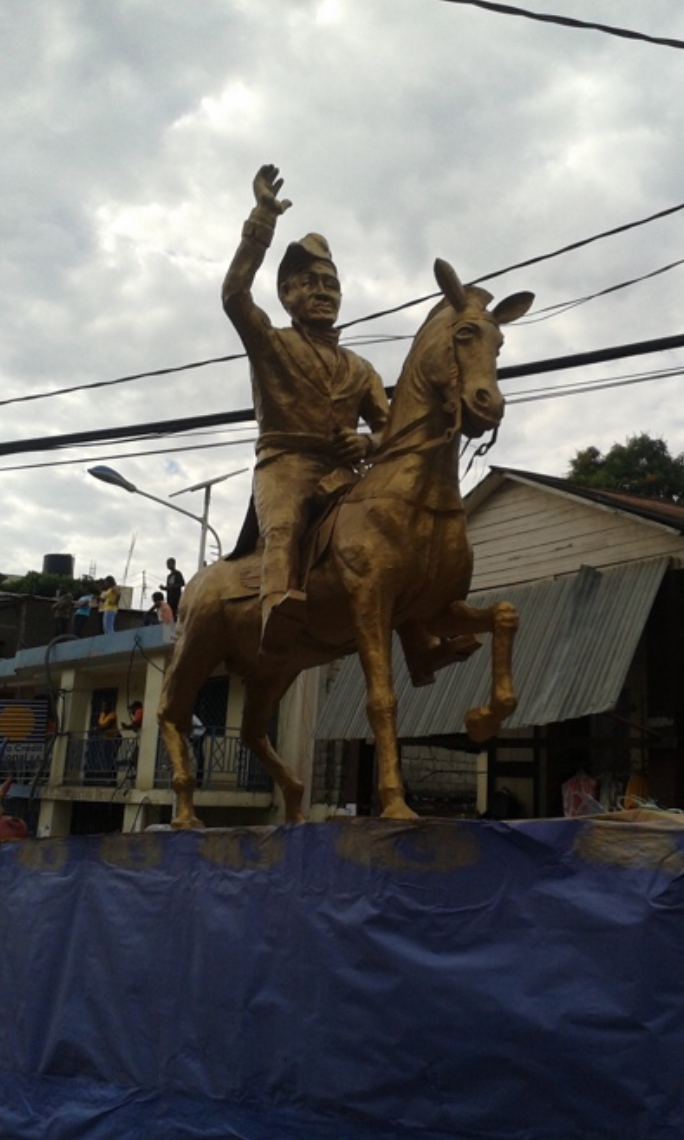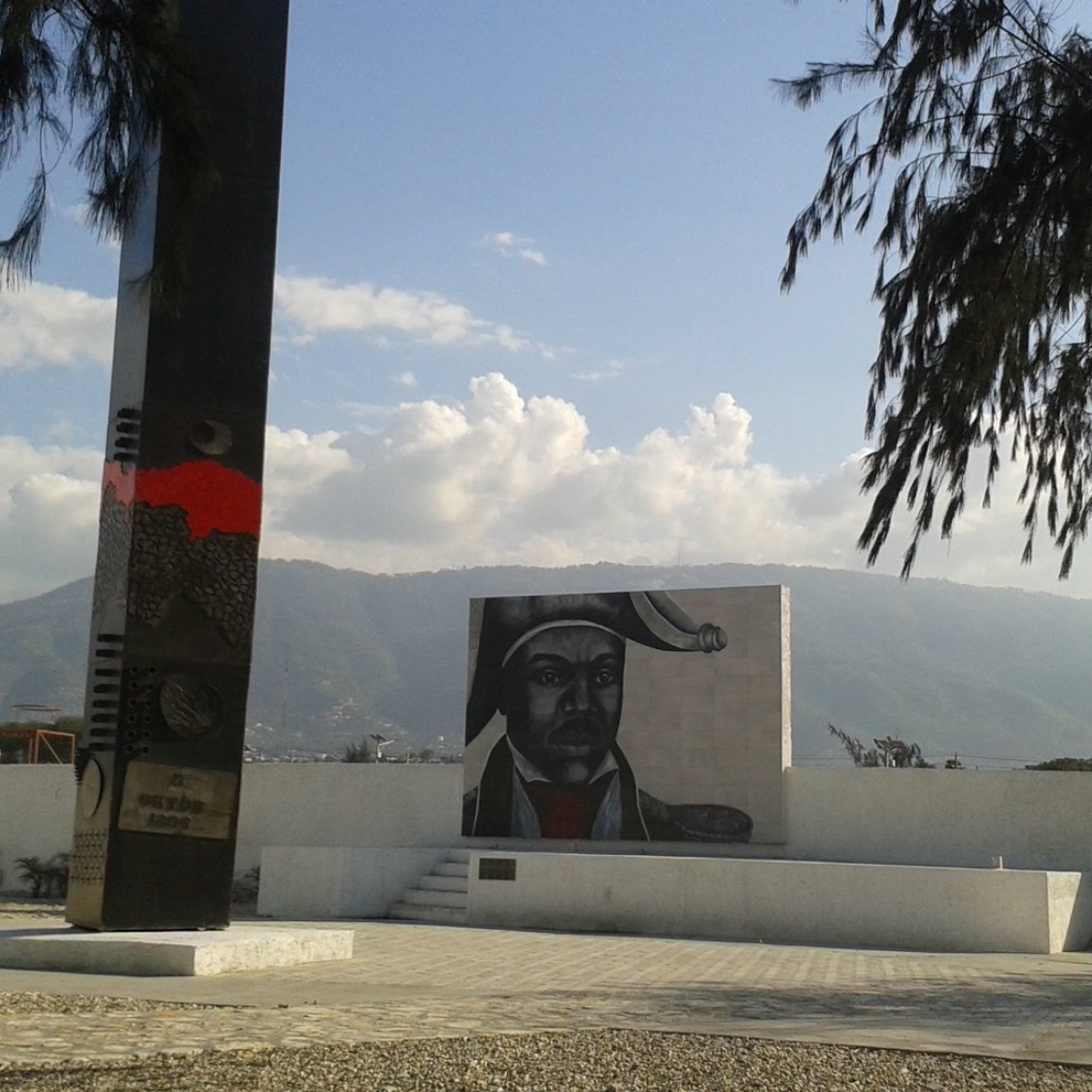By Erin Zavitz
On 25 October 2015, Haitians went to the ballot box for the first round of presidential elections. None of the fifty-four candidates on the ballot received a majority. In Haiti, a run-off election is the next step. Yet the months since 25 October have been filled with protests, international intrigue, and the collapse of the Provisional Electoral Council (CEP). Discussion in the foreign press of Haiti’s political turmoil has focused on the two run-off candidates, Jovenel Moïse and Jude Celestin, and the former president Michel Martelly, as well as the role of the international community, specifically the United States.
Absent from many of these conversations is the third-place candidate, Moïse Jean-Charles, who represents the political party Platform Pitit Dessalines. Jean-Charles’s party is named for Haiti’s founder, the former slave Jean-Jacques Dessalines. Jean-Charles campaigned with the promise of starting an economic revolution, a complement to the political revolution Dessalines began in 1804. More importantly, in protests after the first round of presidential elections, he took to the streets of Haiti’s second largest city, Cap Haïtien, dressed as Dessalines.
While Jean-Charles’s campaign and political party are just one example of the uses of the memory of Dessalines in contemporary Haiti, they illustrate a condensation of time on Haiti’s streets in which the revolutionary past merges with present political tensions to continue the revolution begun over two hundred years ago.

Haiti’s revolution created the first post-slavery and second postcolonial state in the Americas, and it encompassed the hemisphere’s largest and first successful slave revolt. Defined by Haitian anthropologist Michel-Rolph Trouillot as “unthinkable,” the revolution and the creation of an independent black state challenged contemporary frames of reference (slavery, colonialism, European cultural superiority).[1] Building a black state and nation in a world dominated by slavery and colonialism was a Sisyphean undertaking. Memories of the revolution were integral to Haiti’s state and nation formation, in particular commemorations of Haiti’s founder, Dessalines.
In the aftermath of Dessalines’s assassination (17 October 1806), Haitian politicians and intellectuals expunged the former revolutionary general and head of state from the official memory. As art historian Carlos Célius describes, Dessalines “languish[ed] in the antechamber of Haiti’s national pantheon.”[2] Nevertheless, unofficial celebrations continued and Dessalines remained a hero in popular memory.
Over the next one hundred years, the elite appropriated the popular commemorations of Dessalines to construct a new official memory of the country’s founder. Commemorative activities leading up to the centennial of Haitian independence (1904) and Dessalines’s death (1906) ushered Dessalines out of the antechamber and into the main gallery of the national pantheon where the other revolutionary heroes resided. The first of January 1904 symbolized a momentous achievement for the island nation. While the symbolic potential of 1904 would quickly dim, the centennial did offer one rebirth—the memory of Jean-Jacques Dessalines. No longer ostracized from official memory, the founder of Haiti marched forward to accept his rightful place.
Commemorations of Dessalines continued to evolve in the twentieth century, in particular during the dictatorship of François Duvalier who claimed to be Dessalines’s heir. I am currently extending my analysis through the bicentennial celebrations in 2004. Yet, in the current invocations of Dessalines, we can see the legacy of Duvalier’s commemorative traditions and a new layering of official and unofficial memories of Haiti’s founder. Dessalines is both an institutionalized hero employed by the state to unite Haitians and a popular hero used by the people to criticize the government and its failures.

Two years before Jean-Charles dressed as Dessalines, another group of protestors employed memories of the revolution to vocalize their concerns. The Dessalines Coordination (KOD), a political party committed to combatting imperialism and protecting the Haitian masses, marched through Port-au-Prince shouting “yo pral kay Pétion.”[3] They are going to Pétion’s house. Pétion’s house refers to Pétionville the wealthy city/suburb up the hill from Port-au-Prince founded by mixed-race president Jean-Pierre Boyer in honor of Alexandre Pétion, Haiti’s first president and revolutionary hero but also a conspirator in Dessalines’s assassination. The protestors continued, “Dessalines yo vle pale.” The command could be translated as Dessalines wants to talk. Yet, the Kreyòl yo leaves open several interpretations. Yo is both the third person plural “they” or plural article. Thus, perhaps the rallying call “The Dessalines want to talk” meant that all the protestors became Dessalines that day.
The invocations of Haiti’s revolutionary heroes on the streets of Port-au-Prince condenses time yet again. The revolution is still alive as are Dessalines and Pétion. The heroes take on or perhaps possess new bodies and come to symbolize new struggles and divisions. The wealthy, educated, French-speaking Haitians of any hue signify Pétion, as do their air-conditioned SUVs, generators, and gated houses. The undereducated, underemployed, politically disenfranchised, Kreyòl-speaking urban masses are Dessalines.
Weeks before KOD’s protest, former Haitian president and former music star Michel Martelly held a memorial service for Dessalines on the anniversary of his assassination 17 October.[4] Following a tradition begun over one hundred fifty years earlier with the first memorial service to Haiti’s founder in 1845, Martelly employed the memory of Dessalines to demonstrate his connection with the black majority.
On 17 October 2015, days before the presidential election, Martelly held another memorial service, this time in front of a new monument to Dessalines at the sight of his death, Pont-Rouge. In both the popular protests of KOD and Platform Pitit Dessalines and the state-sanctioned memorial service, the original man Jean-Jacques Dessalines was lost to the myths that had emerged over the centuries after his death. And, the revolution lived on.

Erin Zavitz is assistant professor of history at the University of Montana Western. Her research focuses on 19th and 20th century Haiti, in particular the construction of Haitian national identity and memory of the Haitian Revolution. You can contact her at erin.zavitz@umwestern.edu or tweet at her @erinzavitz.
[1] Michel-Rolph Trouillot, Silencing the Past: Power and the Production of History (Boston: Beacon Press, 1995), 82.
[2] Carlo Célius, “Neoclassicism and the Haitian Revolution,” in The World of the Haitian Revolution, ed. David Patrick Geggus and Norman Fiering (Bloomington: Indiana University Press, 2009), 389.
[3] Kim Ives, “The Dessalines Coordination Launches Itself as a New Party,” Haïti Liberté 7, no. 31 (Feb. 2014), accessed 13 Jan. 2015, http://haiti-liberte.com/archives/volume7-31/The%20Dessalines%20Coordination.asp.
[4] Robenson Geffrard, “Pour Dessalines, Martelly veut tourner le dos à la confrontation,” Le Nouvelliste, 18 Oct 2013.
Further Reading
Carlos Célius, “Neoclassicism and the Haitian Revolution.” In The World of the Haitian Revolution, edited by David Patrick Geggus and Norman Fiering, 352-392. Bloomington:Indiana University Press, 2009.
Daut, Marlene. Tropics of Haiti: Race and the Literary History of the Haitian Revolution in the Atlantic World, 1789-1865. Liverpool: Liverpool University Press, 2015.
Dayan, Colin (Joan). Haiti, History, and the Gods. Berkeley: University of California Press, 1995.
Zavitz, Erin. “Revolutionary Commemorations: Jean-Jacques Dessalines and Haitian Independence Day, 1804-1904.” In The Haitian Declaration of Independence: Creation, Context, and Legacy, edited by Julia Gaffield, 219-237. Charlottesville: University of Virginia Press, 2016.
3 thoughts on “The 2015-16 Haitian Elections: Politicizing Dessalines and the Memory of the Haitian Revolution”